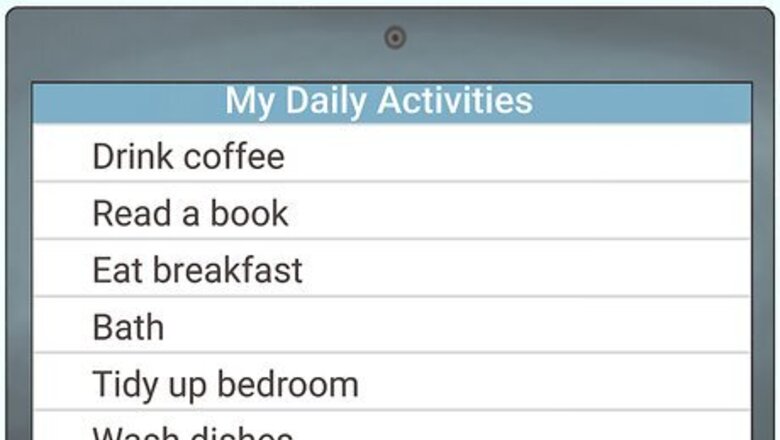
views
Creating Your Routine
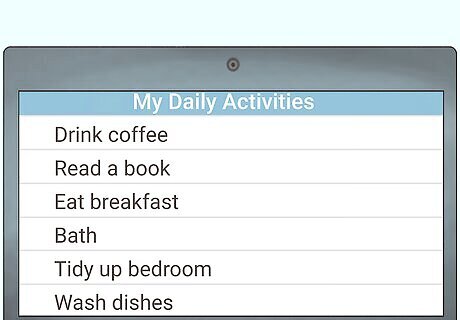
Make a list of your daily activities. Start with the things that you already do every day. Then add things that you want to do every day. Think of how the things you already do can trigger you to do the things you want to do. This will help you put the pieces of your routine together. For example, you might drink a cup of coffee every morning when you wake up. You want to read more, so you decide to add that to your routine and read for 10 minutes each morning while you drink your coffee. Don't forget to include self-care in your routine! Love and transformation coach Jennifer Butler recommends that you "give yourself at least a half-hour in the morning, and then at least a half-hour at night" for self-care. Having a daily to-do list can help you structure your routine. As a bonus, you get the satisfaction that comes with crossing off completed tasks!
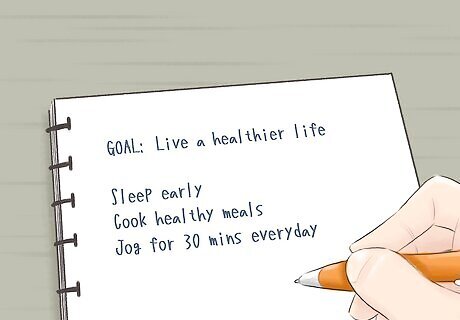
Set a goal for your routine. The ultimate goal you want to achieve helps you decide which tasks to include in your routine. Do you want your routine to help you become more productive? To get fit? To live a healthier life? Once you know your routine's purpose, you'll know how to arrange your day to satisfy that purpose. For example, if your goal is to live a healthier life, you might want to craft a routine that helps you get more sleep at night or frees up time for you to cook healthier meals. Life coach Michelle Shahbazyan agrees that "figuring out what the ultimate goal is and then working backward from there is probably the best starting point.... [Then,] depending on what it is you want to ultimately achieve, you can figure out what the basic steps are to get to that place." It's totally normal to have different routines for different times of day or even different events. For example, you might create a routine for leaving the house.Find your motivation. "To sustain a routine, I know I have to be self-motivated. This involves incorporating activities that I place value on for myself, not for anyone else. When deciding on a routine, I look for something that's going to make me feel physically and mentally better at the end of it. If I can say yes to that it doesn't matter how I got there, or what the outcome is. The important part is the process. For me, that's the mental shift it takes to take something from being a burden into being enjoyable. You have to motivate yourself to keep a routine by including activities that you can directly tell are positive and additive for you." Talia, 26 year-old
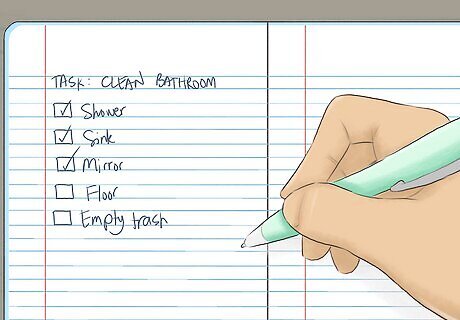
Break tasks into smaller chunks that are easier to achieve. Breaking up larger tasks into manageable chunks helps you get more done. Take complex tasks and list their components—by breaking these up, you can get a lot done without even thinking about it. For example, you might break down the large task of cleaning the bathroom into the smaller tasks of cleaning the toilet, cleaning the shower, cleaning the sink and mirror, emptying the trash, and cleaning the floor. Smaller tasks also give you more frequent feelings of accomplishment to keep you motivated. Butler recommends that you "set yourself up to win," by starting with small steps toward your goal and working your way up. Certified executive coach Jessica Elliot agrees that "small incremental steps are always a better choice. You may feel like you are not getting anywhere, but by doing a few things every day, you're adding to your overall larger goal."
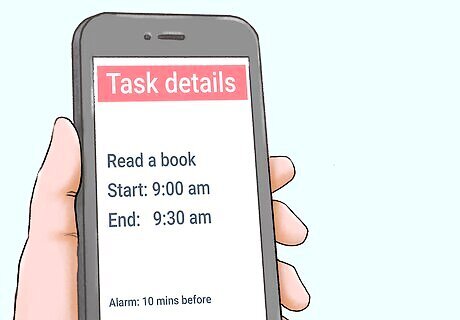
Determine the time you need to complete the tasks in your routine. Each of the individual tasks in your routine will take you an average amount of time. In general, try to give each task just a little longer than it actually takes you to complete. Add those padded estimates together to figure out how long your entire routine should take. That way, you'll know when you can get it done without rushing or feeling stressed. Shahbazyan notes that perhaps "the most common mistake people make is thinking that they have more time than they do." Avoid this by padding your estimates with extra time. For example, if your morning routine includes 30 minutes of exercise, eating breakfast, and taking a shower, and getting dressed, you might determine that those 4 things take you a total of 2 hours.
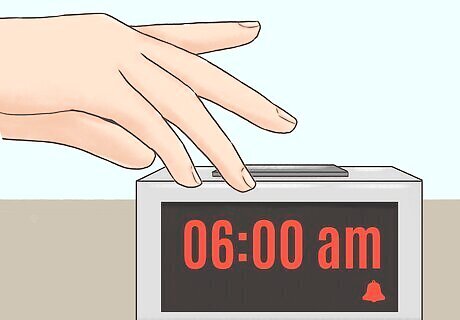
Start your routine at the same time every day. Choose a distinct block of time for daily routines, such as your morning routine and your bedtime routine. Designating these specific times for your routine helps you structure your day and make sure you have time to do the things you need to do. Having a hard time deciding what to do when? Elliot recommends "doing the most important things of your day in the morning. This method is directly correlated to your energy levels, as most people have higher energy for the first part of the day, then it dips in the afternoon." At the same time, pay attention to your own energy levels. If you get a burst of energy at 4 p.m., use that time for more involved tasks. If your everyday schedule is more fluid, you might try hinging your routine on a specific action, such as waking up, rather than a specific hour.

Add less frequent tasks to your routine gradually. You likely have some tasks that you need to do but you don't need to do them every day. Make a list of tasks that you need to do weekly, bi-weekly, or monthly. Then, you can add those into your routines where you have time and it makes sense to do so. For example, if you want to clean your bathroom once a week, you might add one bathroom cleaning task to your morning routine each day so that at the end of the week, your bathroom will be clean and you won't even have to think about it.

Follow your routine for at least 2 months to make it a habit. It does take some time to turn a routine into a habit so that you can reap all of the benefits. Once the different parts of your routine become habitual, you'll do them without thinking—and that takes a lot of stress and pressure off your mind. Take advantage of smartphone apps to help keep you on track. You can set reminders on your iOS or Android device so you know what comes next or when to get started on a routine. For example, you might set a reminder an hour before bed to remind yourself to start your bedtime routine. Missing a day here or there probably won't make that much of a difference, but Butler agrees it's important to have "consistency, for sure, [when] creating a new habit."

Forgive yourself when you slip up. Making mistakes is just par for the course when you're trying to engrain a new habit into your daily routine. While it's possible that you'll take to it right away, remember that change isn't linear. If you believe that your routine is good for you and is worth doing, you'll ultimately get it down. If you have an off day or forget something that's relatively new, don't beat yourself up. Making changes to your lifestyle is tough—you're doing a great job! Some days you might only have the bandwidth to do part of your routine. For example, if you've planned to do 40 pushups every day, it's okay if you only manage to do 20 one day—you're still making progress!

Keep track of your progress to gauge whether your routine is working. At the end of each week, look back at how well you've followed your routine and whether you're making progress towards your goals. If you're having a harder time with some parts of your routine than others, figure out why. Once you've figured out why something is difficult for you, it's usually pretty easy to figure out what you can do to make it a little easier on yourself. For long-term goals, it might make more sense to check your progress once a month rather than once a week.
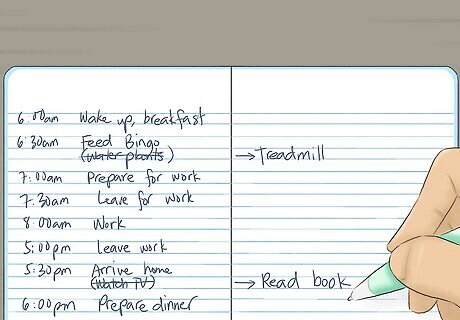
Make changes to your routine as needed. After your routine has become habitual, it's easy to feel stuck in it. If you become overly rigid about your routine, you'll keep doing it long after it's stopped actually serving your needs. Treat your routine as fluid and subject to change, rather than as something that's set in stone. For example, if you're getting bored with your workout routine, feel free to switch to a different activity rather than forcing yourself to continue to do something you don't enjoy. Don't be afraid to go in a different direction if your routine isn't working out the way you'd hoped. Elliot encourages you to "get experimental on your self-discovery journey and know that there are no failures, only different paths of discovery."
Benefits of Having a Routine
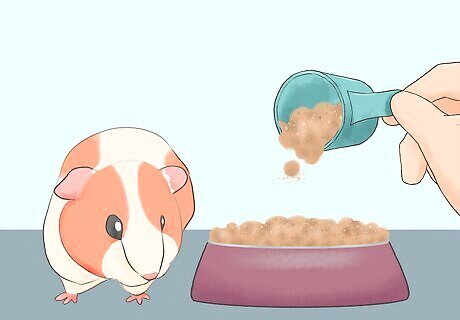
Reduced stress Trying to remember to do every little thing you have to do every day is stressful enough. On top of that, you're likely worrying about what needs to get done—not to mention having to deal with what happens if you forget something or put it off for too long. With a routine, you end up with a lot fewer things to think about. You also have fewer worries throughout the day. For example, if you feed your pets regularly as part of your morning routine, you won't have to go about your day wondering and worrying about whether you fed them. Routines also keep things from piling up and becoming even more stressful to deal with. For example, if you do laundry as part of your routine, you're not having to spend hours doing it when you've amassed several loads' worth and have nothing clean to wear.
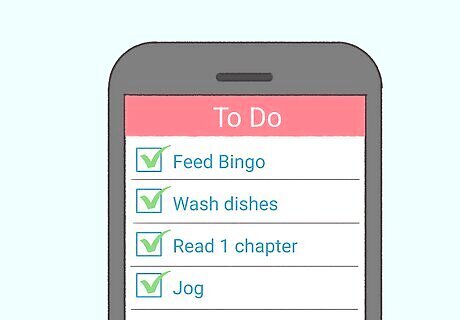
Greater efficiency With a routine, you develop better time management skills and learn how to get the most out of your day. Through the process of creating a routine, you gain a better sense of which things work well together. Put it all together and you'll find it takes you less time to do the things you need to do so you can do more of the things you want to do. For example, if you include 15 minutes of house-cleaning in your morning and evening routines, you can keep a clean house without feeling like you're spending all of your time straightening up.

Increased productivity Developing a routine helps you do more with the time you have because you can focus. When you know that all of your routine daily tasks are taken care of, you have more brainpower to devote to your work or studies. Prioritizing your most important tasks for earlier in the day allows you to get the most important work done when you're at your freshest and have the most energy available. Bundling similar tasks together also helps you be more productive because you don't have to switch gears as much. For example, you might spend 10 minutes dusting everything rather than including dusting as a separate task for each room.

Improved health and well-being As long as the routine you have is a healthy one, your commitment to that routine will pay off tremendously. Within a few months of sticking to your routine, you'll likely notice that you feel better mentally and physically. People tend to thrive in structure. The more parts of your day are structured, the more likely you are to make healthy choices. Having more structure also gives you more freedom to have fun and do things you want to do, which can really boost your self-confidence and mental health generally.

Heightened sense of security People feel more comfortable when they know what's going to happen next. The more structure you can give to your day, the more safe and at ease you'll feel. It serves as a sort of anchor that grounds you and helps you manage the inevitable uncertainty of life. This sense of comfort and security can also increase your confidence as you go about your day because you know things are going to be relatively predictable. You might also think of your routine as the foundation that the rest of your life is built upon. This foundation gives you sure footing to take the next step toward success.




















Comments
0 comment